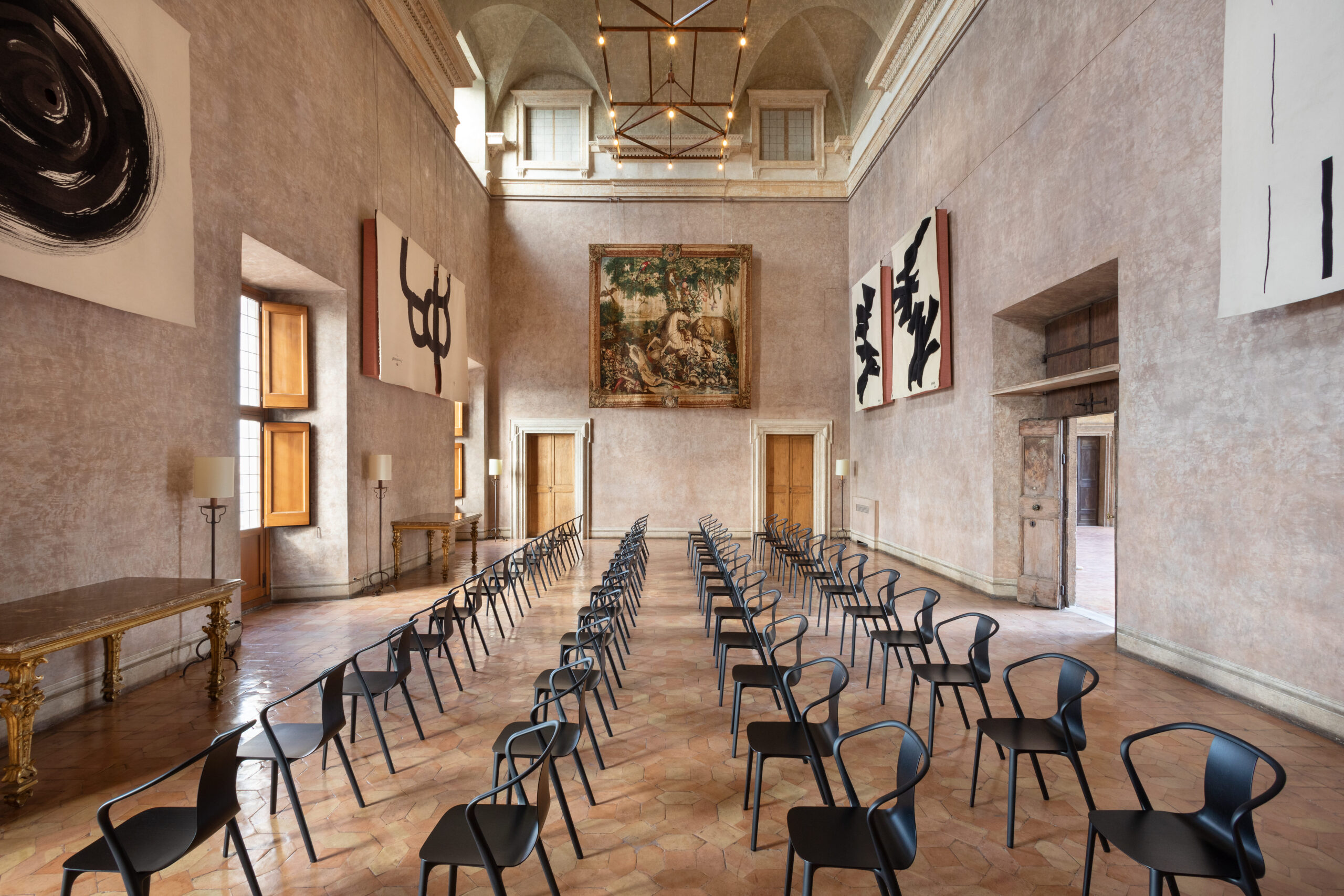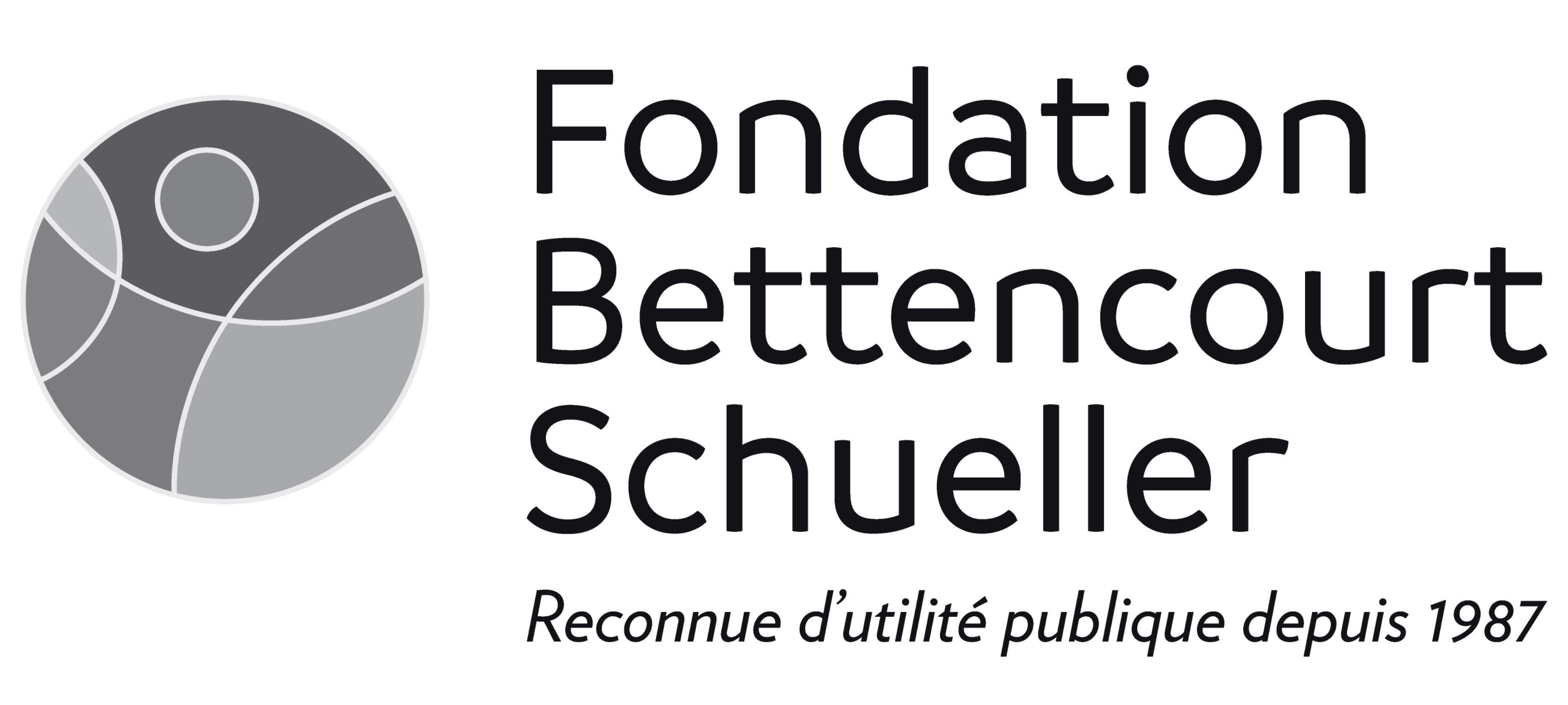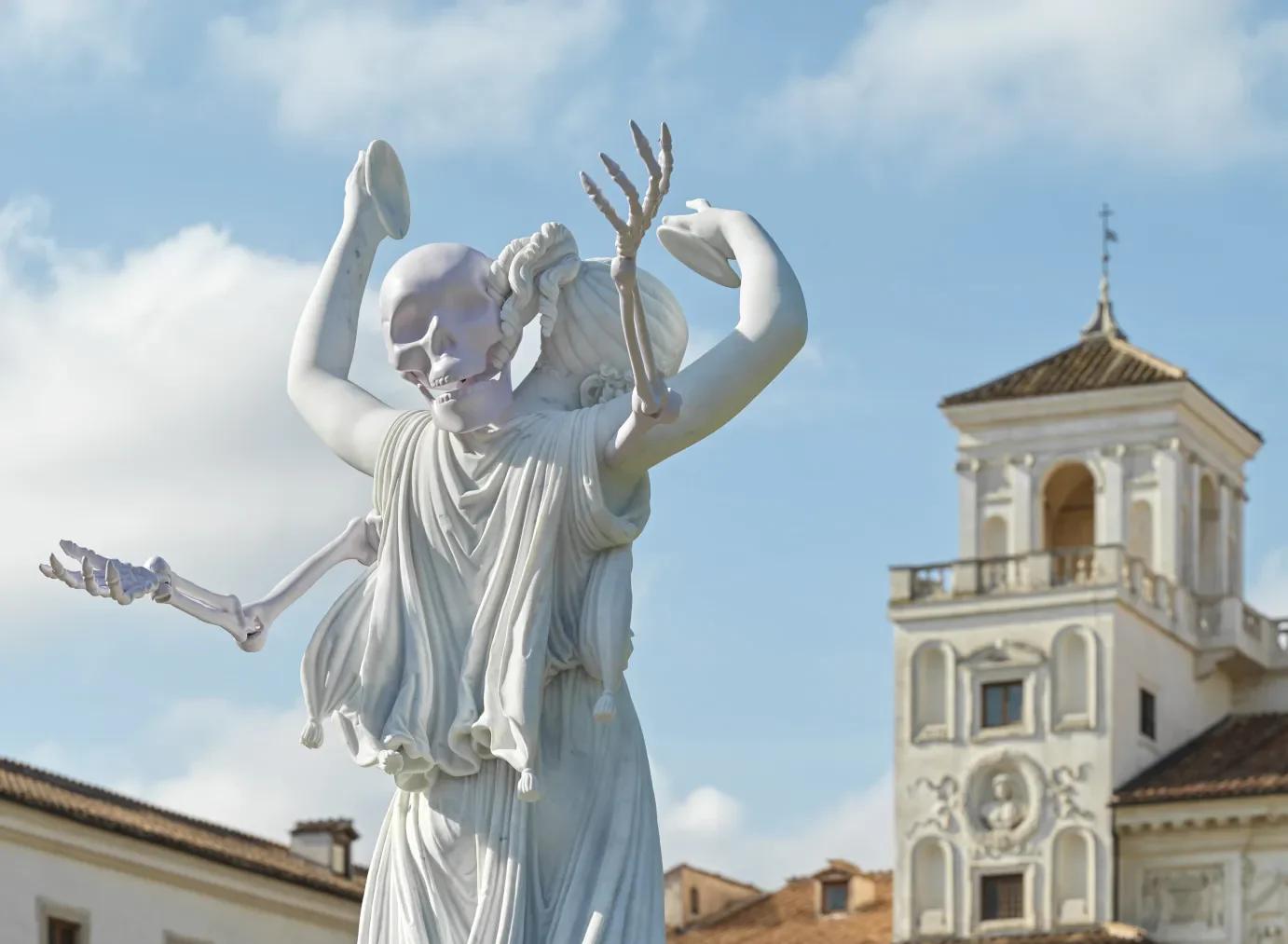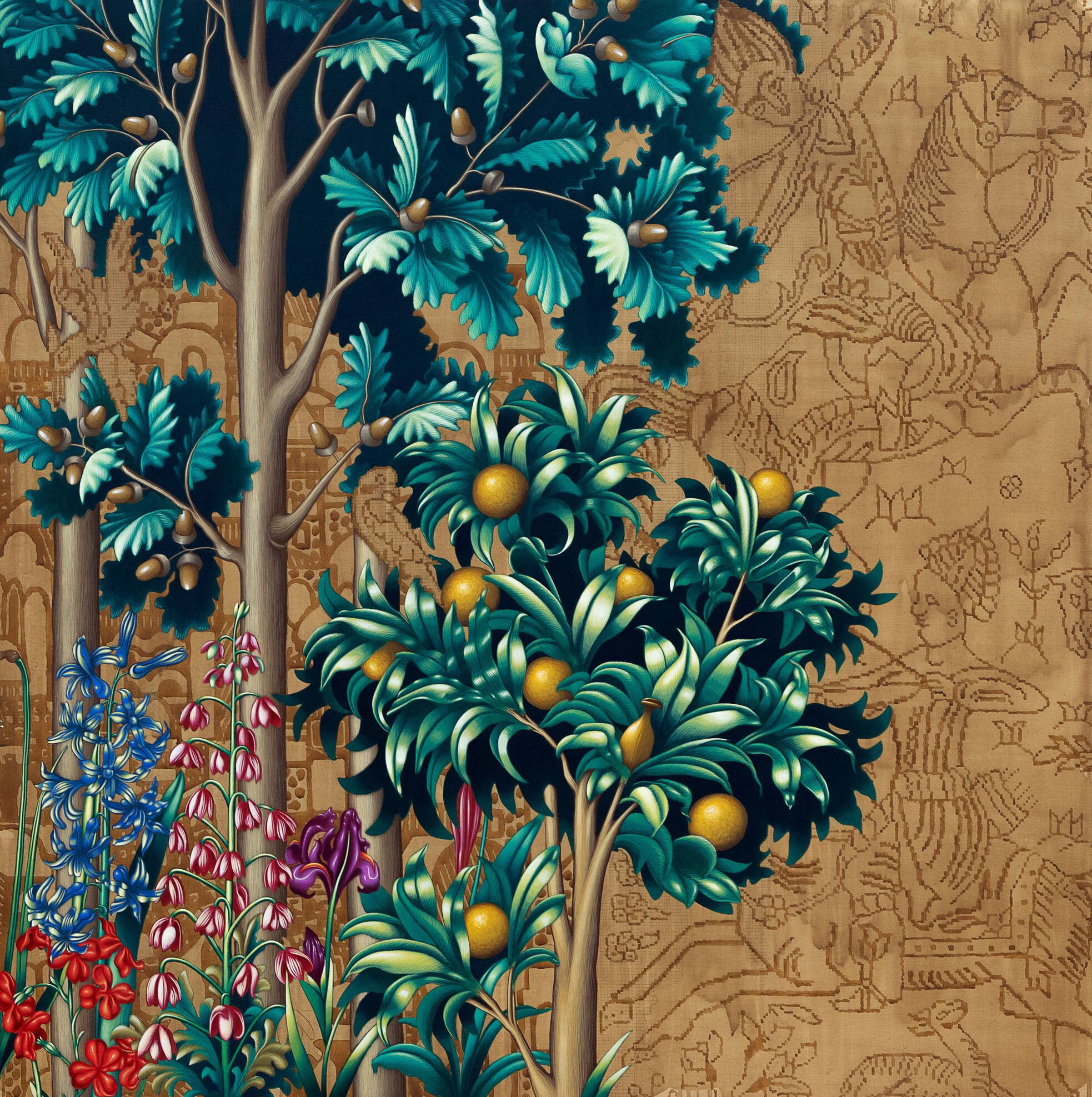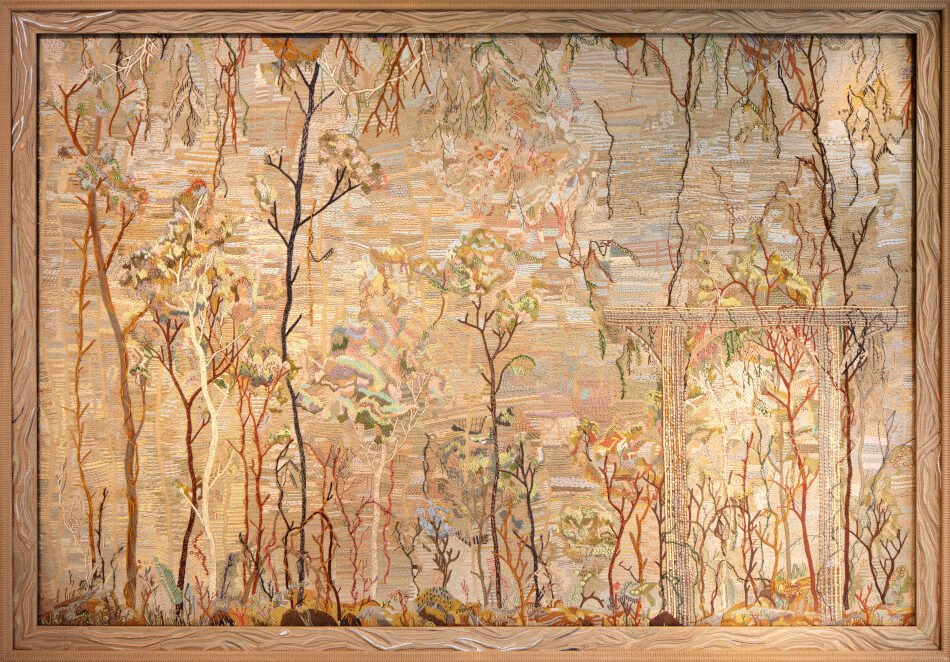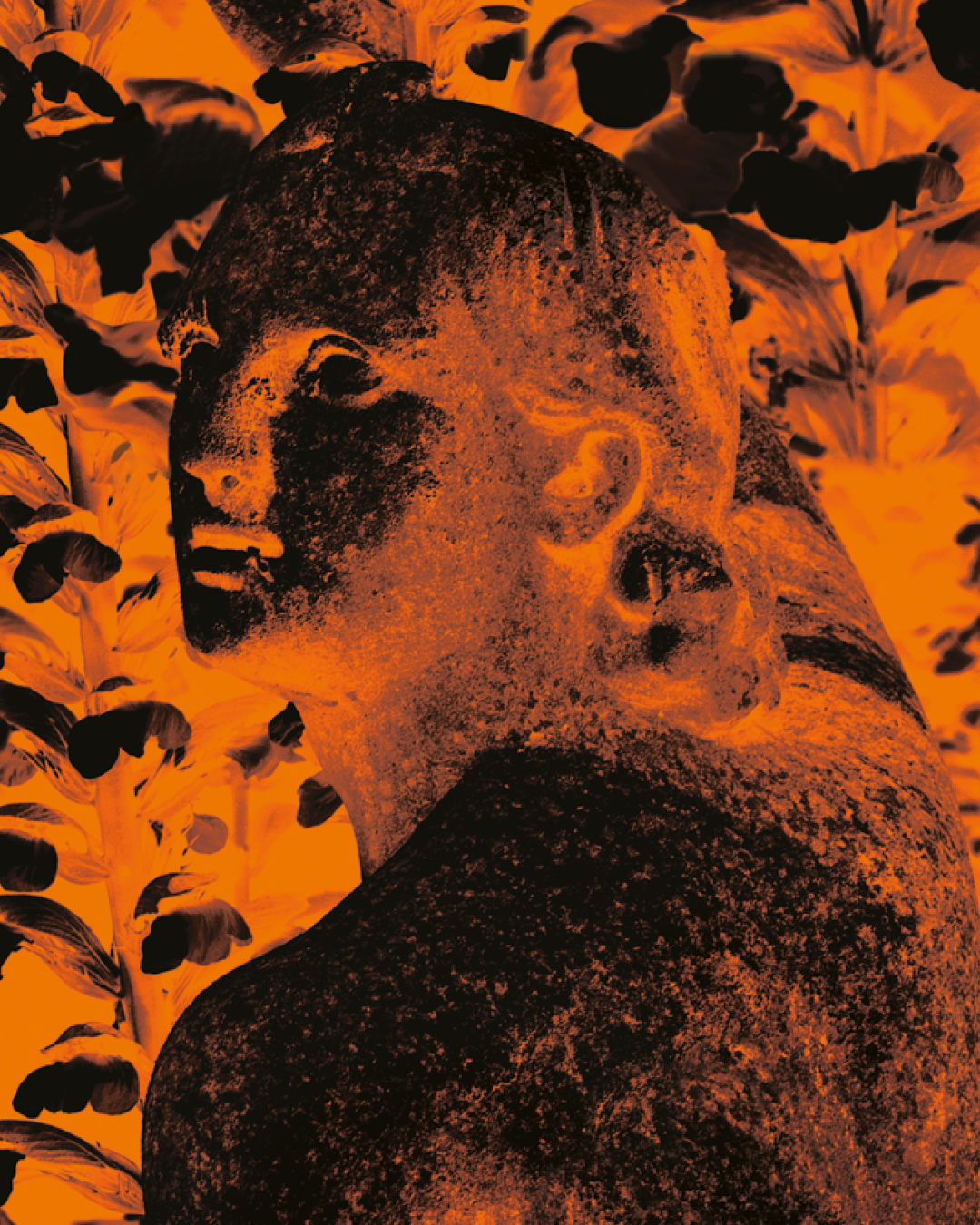Search
Exceptional opening
of Villa Medici reenchanted
14.06 - 15.06.2025
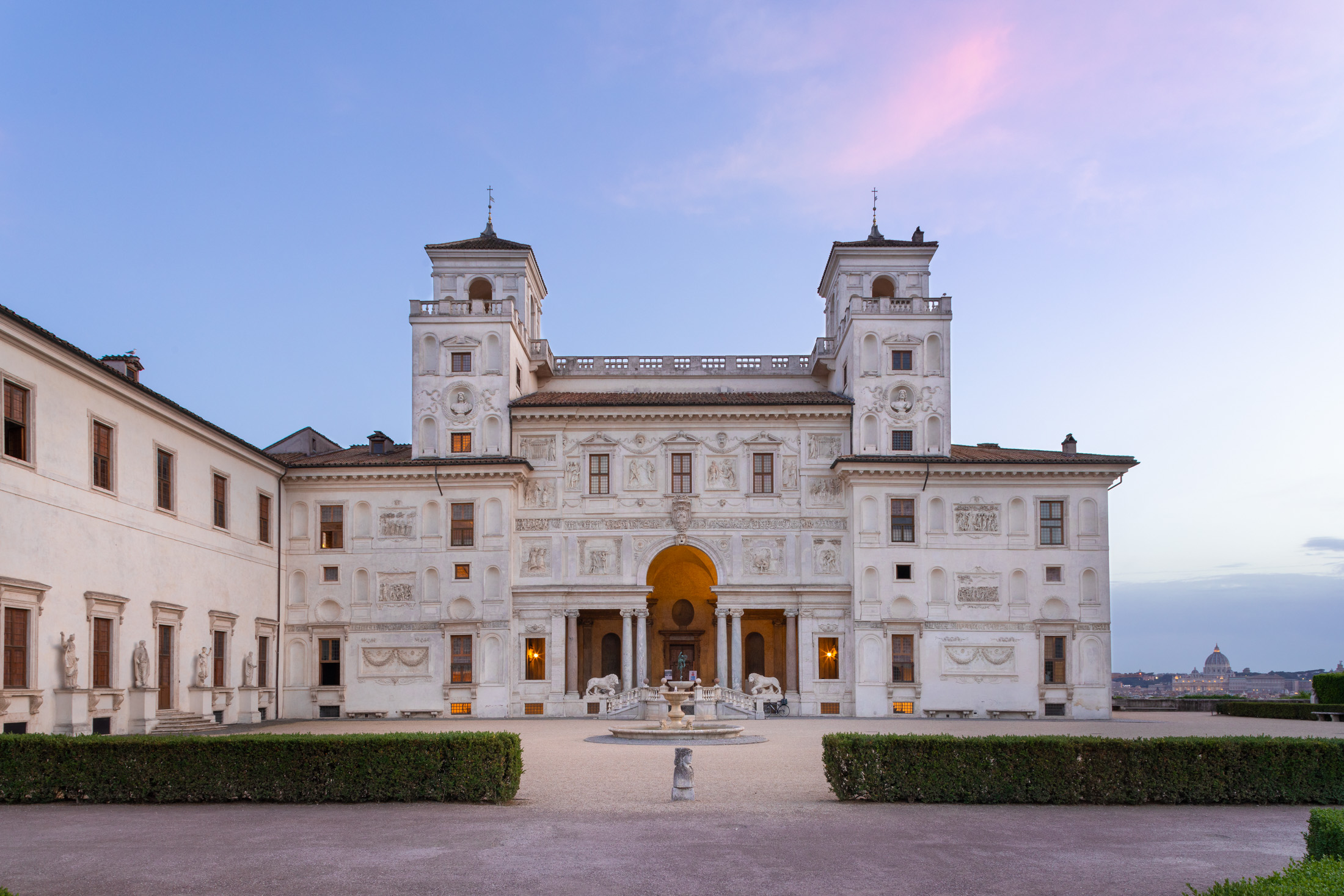
On the occasion of the inauguration of six guest rooms and two citrus gardens, the Villa Medici will exceptionally open its doors on June 14th and 15th for a tour of its newly enchanted spaces!
The Reenchanting Villa Medici project was launched by the French Academy in Rome – Villa Medici in 2022 at the initiative of its director Sam Stourdzé.
In 3 years, 6 salons, 12 rooms and 2 gardens have been refurbished.
2025
6 guest rooms, by 6 teams of architects and designers in association with art professionals
1 lemon garden, artistic direction Bas Smets in collaboration with Pierre-Antoine Gatier
1 parterres garden, with artists Natsuko Uchino and Laura Vazquez
2023
6 historic rooms, artistic direction India Mahdavi
2022
6 reception rooms, artistic direction Kim Jones and Silvia Venturini Fendi
Launched in 2022, the refurbishment program Re-enchanting Villa Medici enters a new phase in 2025 with the unveiling of six guest rooms and two citrus gardens redesigned in a spirit of dialogue between heritage and contemporary creation.
Following the refurbishment of the reception salons at Villa Medici by Kim Jones and Silvia Venturini Fendi in 2022 and the historic rooms by India Mahdavi in 2023, this new chapter of the re-enchantment brings together the vision of architects, designers, landscape planners, craft professionals, and contemporary artists.
Accordingly, each of the six guest rooms has been entrusted to a team of architects and designers working in close collaboration with arts and crafts professionals:
Selected through competition, the teams infuse the rooms with a new contemporary spirit, transforming a stay at Villa Medici into a unique experience where Roman inspirations interwine with references to the Villa’s Renaissance heritage.
Outside, the redesign of the lemon garden is the work of Landscape architect Bas Smets, in collaboration with Pierre-Antoine Gatier, chief architect of historical monuments. Their intervention seeks to enhance Ferdinando de’ Medici’s secret garden, with its panoramic view over Rome and its iconic lemon trees. On this occasion, the new Cosimo de’ Medici outdoor furniture line, inspired by the garden, was specially created by the design duo Muller Van Severen and produced by Tectona.
In front of Villa Medici’s theatrical façade with its Serlian loggia, the parterre garden, which extends right up to the Aurelian Wall, has also been redesigned. Reviving the heritage of Ferdinando de’ Medici and his passion for citrus fruits, twenty lemon trees, selected from historical varieties, are arranged in a scenography that highlights the work of ceramic artist Natsuko Uchino and poet Laura Vazquez. Invited to design the decoration of the pots, Natsuko Uchino created a series of unique pieces that blend contemporary gestures with Tuscan artisanal traditions. Laura Vazquez, a fellow of Villa Medici and winner of the 2023 Prix Goncourt for Poetry, contributed a poem consisting of 20 words engraved on the stone bases.
2025
The 6 guest rooms
Six teams of contemporary architects, designers and artists have been selected to redesign seven guest rooms in the south wing of the Villa Medici. The new layout of the rooms is an opportunity to showcase a wide range of exceptional skills in working with glass, metal, ceramics, wood and wall plaster. The uniqueness of each room is reaffirmed: volumes are highlighted, surfaces sublimated (walls, floors) and the unity of each space emphasized. Withan average surface area of 40m2, the rooms retain their period structural features: high wooden coffered ceilings, brick herringbone floors, double casement windows and a mezzanine.
The guest rooms have seen a variety of uses over the centuries. In the 16th century, when Cardinal Ferdinand de’ Medici had the building refurbished, the rooms were used for storage. In the early 19th century, when the Villa Medici became the headquarters of the Académie de France in Rome, they were transformed into living quarters for the boarders, a function they retained for over two hundred years. A footbridge was added to facilitate access. For a long time, these apartments were given priority to painters, as their double north-south exposure offered a spectacular view of both Rome and the Villa Medici’s interior façade. Since 2009, these living quarters have been open to bookings and guests.
The winning projects in the bed and breakfast redevelopment :
Project: Studiolo
Team:
Sébastien Kieffer and Léa Padovani, Paris, FR / Designers
Atelier Veneer (Romain Boulais and Félix Lévêque), Paris, FR / Concept developers-creators and cabinetmaker artisansProject: Camera Fantasia
Team:
Studio GGSV (Gaëlle Gabillet and Stéphane Villard), Paris, FR / Designers
Paper Factor (Riccardo Cavaciocchi), Lecce, IT / Micro-paper pulp artist
Matthieu Lemarié, Paris, FR / Decorative painterProject: Il cielo in una stanza
Team:
Studio Zanellato/Bortotto (Giorgia Zanellato and Daniele Bortotto), Treviso, IT / Designers
Incalmi (Patrizia Mian and Gianluca Zanella), Venice, IT / Grand feu enamelersProject: Pars pro toto
Team:
Eliane Le Roux (Rocas), Brussels, BE / Artistic director and architect
Miza Mucciarelli (Atelier Misto), Brescia, IT / Architect
Claudio Gottardi, Brescia, IT / Master of decorative artProject: Stratus Surprisus
Team:
Constance Guisset Studio (Constance Guisset), Paris, FR / Designer
Signature Murale (Pierre Gouazé), Puteaux, FR / Decorative plaster designer
Arcam Glass (Simon Muller), Vertou, FR / Master glassmakerProject: Isola
Team:
Sabourin Costes (Zoé Costes and Paola Sabourin), Paris, FR / Designer
Estampille 52 (Paul Mazet and Fantin Mayer-Peraldi), Paris, FR / CabinetmakersThe lemon garden
Artistic direction: Bas Smets with the collaboration of Pierre-Antoine Gatier
The former secret garden of Ferdinando de’ Medici, with its triangular plan, has undergone several transformations since its creation, one of them on the initiative of Balthus, director of the Academy from 1961 to 1977, who introduced lemon trees. Landscape architect Bas Smets, in collaboration with Pierre-Antoine Gatier, chief architect of historical monuments, now proposes a new intervention to refine this pleasure garden in a contemporary spirit. New lemon trees are being planted in the ground itself and other trees in pots are being placed in the garden, while a pergola of Lunario lemon trees – a variety that produces fruit all year round – is being created. This pergola, 26 meters long, extends along the belvedere overlooking Rome, so that the skyline becomes an integral part of the garden’s layout.
Invited by Villa Medici, the Muller Van Severen designer duo created the Cosimo de’ Medici line of outdoor furniture, which integrates the garden. Produced by Tectona, this new line pays tribute to the Grand-duc of Tuscany, Cosimo I, Ferdinando’s father, who formed a collection of rare citrus fruits in Florence in the sixteenth century and passed on his passion to his son. With its triangular motifs, the Cosimo de’ Medici line echoes both the geometry of the garden and the architectural elements of Villa Medici. The color palette, composed of light green, dark blue, and white, reinforces the harmony at the heart of this citrus garden, offering a subtle contrast with the natural surroundings.
The parterre garden
Guest artists: Natsuko Uchino and Laura Vazquez
Facing Villa Medici’s loggia is the piazzale which extends to the parterre bordering the Aurelian Wall, marking the northeastern boundary of the gardens. Subdivided into 6 geometrically designed compartments, the parterre offers a privileged view of Villa Medici’s façade, decorated with antique bas-reliefs from Ferdinando de Medici’s collection.
Designed by Balthus in the 1960s and 70s with a sophisticated layout around an obelisk, then by Richard Peduzzi in the 2000s with the creation of the geometric motif which is his signature today, in 2025 the scenography of the parterre was redesigned.
The garden now has a group of twenty lemon trees, selected especially for Villa Medici by the nursery specialists and citrus growers Oscar Tintori Vivai (Castellare di Pescia, Tuscany). Balancing the contrasts between its vertical aspects and surface, the new garden brings back to life the tradition of Tuscan gardens. Lemon trees are placed in terracotta urns, each one a unique creation by Japanese artist Natsuko Uchino. The series, made in the Pesci Giorgio & Figli kiln (Impruneta, Tuscany), consists of 20 pieces decorated with motifs that recall ancient iconography and Medici symbols. The decorations were created using engravings and various modeling and molding techniques, including the exceptional use of fragments of Roman Imperial-era remains recovered at Villa Medici in 2010. The reliefs on the vases, which are particularly pronounced, accentuate their contemporary nature and give memory to the creative gesture.
The bases on which the pots were created by Daniele de Tomassi, one of the last Roman stone carvers and marble workers who still works by hand. The bases were carved from peperino from Viterbo, a gray-hued volcanic stone, characteristic of Lazio. Their function is to drain water to prevent stagnation in the pot, which is harmful to the roots of the citrus trees.
Each of the 20 bases is engraved with a word, together forming a poem conceived by Laura Vazquez, poet, former fellow of Villa Medici, and winner of the 2023 Prix Goncourt for Poetry. The radical nature of her contemporary writing meets the materiality of the stone.
2023
The 6 historic rooms
Art Direction: India Mahdavi
Moving upstairs at Villa Medici, the re-enchantment continues in a colorful, graphic idiom. In the six historic rooms above the loggia, Franco-Iranian architect and designer India Mahdavi orchestrated the refurbishment, playing with the juxtaposition of colors, materials, and geometries.
The Rooms of Jupier’s Loves, the Elements Room, and the Muses Room, which make up the former apartment of Cardinal Ferdinando de’ Medici, now open to visitors, are brightened with the pastel textiles chosen by India Mahdavi to upholster the antique furniture belonging to Villa Medici or on loan. Taken from the storerooms of the Mobilier National, such as the luminous suite of sofa and armchairs by Jean-Albert Lesage (1966) in the Lili Boulanger Salon with its luminous yellow. In the Muses Room, the large diamond-patterned carpet echoes the parterre redesigned in the 2000s by Richard Peduzzi, laid out in the gardens below.
Another allusion, the polychrome furniture of the Galileo and Debussy Rooms, designed by Mahdavi and covered with a marquetry pattern of trompe-l’oeil cubes, recalls the nuances of the sixteenth-century painted friezes and ceilings. Produced by Maison Craman Lagarde and the cabinetmaker Pascal Michalon respectively, these marquetry pieces are examples of the exceptional range of expertise mobilized for the re-enchantment of Villa Medici (cabinetmaking, ceramics, tapestry) and of the alliance, at the highest level, between design and arts and crafts.
2022
The 6 reception rooms
Artistic direction: Kim Jones and Silvia Venturini Fendi
On the garden level of Villa Medici, the refurbishment of the six reception salons (2022) was entrusted to Kim Jones and Silvia Venturini Fendi who have selected contemporary furniture by French and Italian designers such as Chiara Andreatti, Ronan and Erwan Bouroullec, Noé Duchaufour-Lawrance, David Lopez Quincoces, and Toan Nguyen, with some items created specially for the occasion.
The refurbishment brings together heritage and contemporary furniture, such as the Via Appia table in travertine and chestnut, specially designed by Noé Duchaufour-Lawrance for Villa Medici, or the Grove & Groovy armchairs by Toan Nguyen, whose warm tones contrast with those of the Virgola chairs by Chiara Andreatti.
The re-enchantment of the salons has made it possible to restore and re-stage pieces from Villa Medici’s collections (a 17th-century painted armoire bought by Balthus, 18th-century tapestries from the Tenture des Indes), and to introduce an exceptional group of 20th-century tapestries on loan from the Mobilier National. These tapestries are by leading female artists such as Louise Bourgeois, Sonia Delaunay, Sheila Hicks, Aurélie Nemours and Alicia Penalba.
Practical information
Saturday, June 14 and Sunday, June 15
Guided tour of the guest rooms (duration 30 min) and free access to the lounges and citrus gardens (+ Festival des cabanes of Villa Medici):
9h30-19h30
Departure every 5 min
Language: French, English and Italian
Full price €10 / reduced €7
→ I book a slot
Self-guided tour of the citrus lounges and gardens (+ Festival des Cabanes of the Villa Medici):
9.30am – 7.30pm
Full price: 7€ / reduced 5€
→ I book a slot






